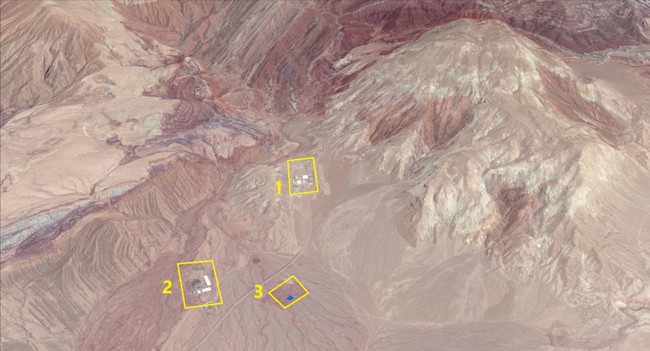
Donald Trump’s efforts to reach an agreement with Iran on ending its nuclear program just got a lot more complicated.
The International Atomic Energy Agency (IAEA) released a “comprehensive” report on Iran’s nuclear program requested by the agency’s 35-member board. The report confirmed that Iran had been carrying out clandestine nuclear activity at three sites long suspected of conducting weapons research. It also concluded that Iran had vastly increased its stockpile of highly enriched uranium (HEU), spinning up 50% more as of May 17 than they had previously reported. That translates into the capability to construct up to nine nuclear bombs.
The IAEA report said that Iran is now “the only non-nuclear-weapon state to produce such material.” The IAEA added that this was of “serious concern.”
The U.S. has held five meetings with Qatari diplomats who are serving as intermediaries between the U.S. and Iran, aiming to avoid direct talks. Little substantive progress has been made. The two sides appear to be hopelessly deadlocked on the key issue of whether Iran should have a nuclear enrichment program at all. Iran sees U.S. insistence that Iran give up enrichment as a non-starter since it believes its nuclear program is now part of its national identity.
It’s hard to see how Trump can continue negotiations after the IAEA report. The Western nations are preparing a resolution that would find Iran in violation of the Non-Proliferation Treaty (NPT). Iran will likely withdraw from the NPT, which means that the minimal cooperation it has been providing to the IAEA will likely come to an end.
Last week, Israel was prepared to strike Iran’s nuclear facilities but backed off when the U.S. requested that Israeli Prime Minister Benjamin Netanyahu hold off to give U.S. negotiators a chance to strike a deal with Tehran.
Now, the IAEA report makes that a moot issue.
While many of the findings relate to activities dating back decades and have been made before, the IAEA report’s conclusions were more definitive. It summarised developments in recent years and pointed more clearly towards coordinated, secret activities, some of which were relevant to producing nuclear weapons.
It also spelled out that Iran’s cooperation with IAEA continues to be “less than satisfactory” in “a number of respects”. The IAEA is still seeking explanations for uranium traces found years ago at two of four sites it has been investigating. Three hosted secret experiments, it found.
The IAEA has concluded that “these three locations, and other possible related locations, were part of an undeclared structured nuclear programme carried out by Iran until the early 2000s and that some activities used undeclared nuclear material”, the report said.
Nuclear material and/or heavily contaminated equipment from that programme was stored at the fourth site, Turquzabad, between 2009 and 2018, it said.
“The Agency concludes that Iran did not declare nuclear material and nuclear-related activities at three undeclared locations in Iran, specifically, Lavisan-Shian, Varamin, and Turquzabad,” the report said.
When Iran first began to enrich uranium, they were using homegrown centrifuges. These machines spin at fantastically high rates of speed, creating centrifugal force, which enables the separation of uranium-235 from uranium-238. U-235 is the primary substance used to create a nuclear bomb.
These IR-1 centrifuges took weeks to separate enough U235 to enrich uranium to the 3% needed to run a nuclear reactor. It would take months to spin up the uranium to bomb-grade.
In 2015, Barack Obama had an opportunity to halt Iran’s nuclear program in its tracks by refusing to allow Tehran to improve the efficiency of its centrifuges. Iran refused, and in his eagerness for an ephemeral foreign policy win, Obama agreed to allow the upgrades.
Today, Iran uses highly advanced IR-6 centrifuges that can easily spin up uranium to 60%. There are no commercial uses for 60% enriched uranium, although it can sometimes be used in research. Those same centrifuges can spin up that 60% enriched uranium to the 90% needed for a nuclear bomb in a matter of days.
Iran has passed the nuclear threshold. Israel is prepared to strike, probably using American “bunker-busting” bombs and American mission support. Nuclear talks with Tehran are a bust, and Iran has never been weaker.
It would appear that Trump is out of options and that if we’re going to deliver a blow to Iran’s nuclear program, which they will spend years recovering from, the time is now.
Help PJ Media continue to tell the truth about the Trump administration’s accomplishments. Join PJ Media VIP and use promo code FIGHT to get 60% off your membership.











